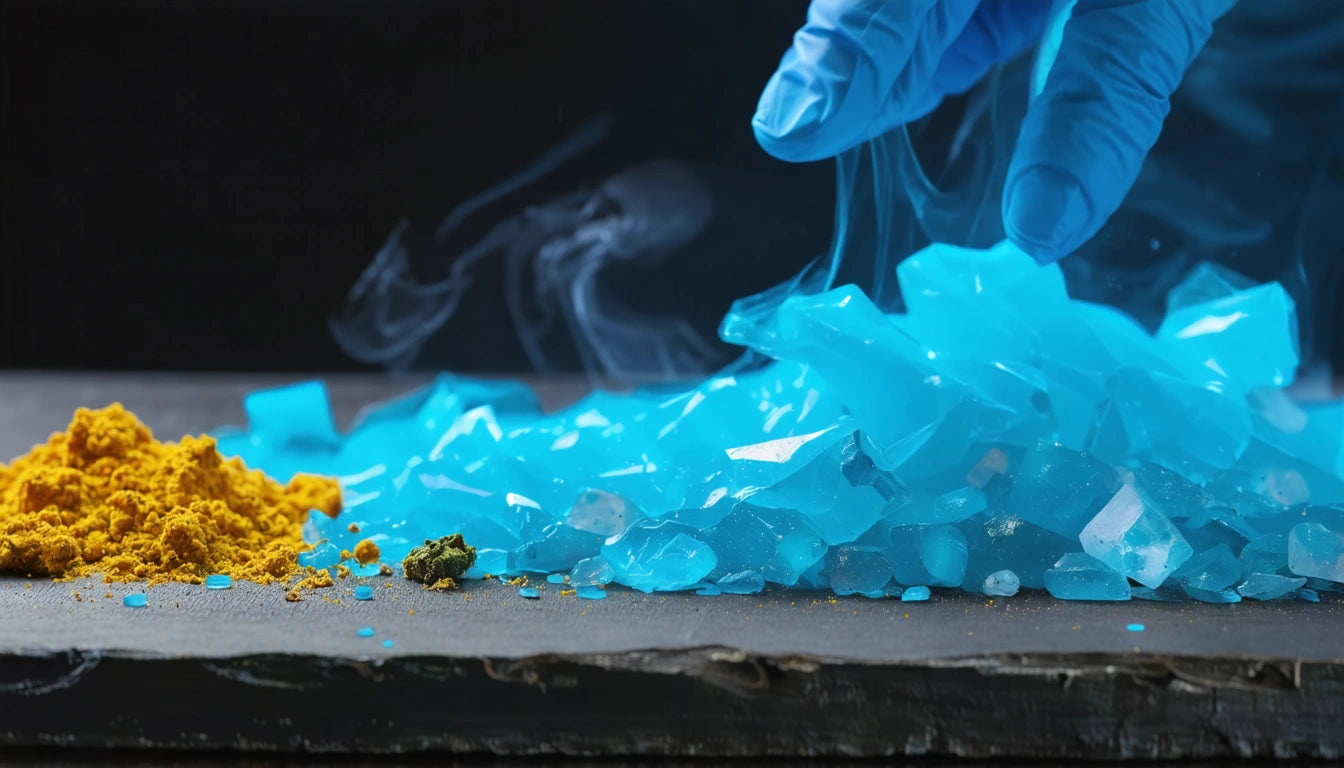Table of Contents
Understanding Sprayed Weed: Differences, Risks, and Identification
Cannabis consumers today face numerous options when purchasing products, but not all options are created equal. One concerning issue in the cannabis market is the presence of sprayed weed, which can pose significant health risks to unsuspecting users. This comprehensive guide examines what sprayed weed is, how to identify it, and the important differences between sprayed and non-sprayed cannabis products.
What is Sprayed Weed: Definition and Overview
Sprayed weed refers to cannabis flower that has been treated with artificial or synthetic substances to enhance certain characteristics. These substances can include synthetic cannabinoids, pesticides, growth enhancers, or visual enhancers that alter the appearance, potency, or weight of the product. Unlike natural cannabis that derives its effects from plant-produced compounds, sprayed weed contains foreign substances that can dramatically change the user experience and safety profile.
According to cannabis terminology experts, the practice of spraying cannabis has become more prevalent in unregulated markets where product testing is not mandatory. This has created a need for consumers to be vigilant about the products they purchase and consume.
Common Substances Used to Spray Cannabis
Synthetic Cannabinoids
Synthetic cannabinoids are lab-created compounds designed to mimic THC effects. These chemicals, often found in products like "Spice" or "K2," can be sprayed onto cannabis flower to increase potency. However, these substances can be unpredictable and dangerous, often causing severe adverse reactions.
Visual Enhancers
Some unscrupulous sellers spray cannabis with substances to improve visual appeal. These can include:
- Glass microbeads or silica to simulate trichomes
- Food coloring to enhance color
- Sugar water to create the appearance of stickiness
- Hairspray to add shine
Weight-Adding Substances
To increase profit margins, some distributors add substances that increase weight. These can include water solutions, sand, or even lead filings in extreme cases. Our industry has seen a concerning trend where proper protective packaging solutions like mylar bags are being used to conceal these altered products, making visual inspection even more challenging for consumers.
Sprayed Weed vs Non Sprayed Weed: Key Differences
Understanding the differences between sprayed weed vs real weed is crucial for consumer safety. Here are the primary distinctions:
Appearance Differences
Natural cannabis typically has:
- Varied coloration with subtle hues
- Visible, naturally-occurring trichomes
- Distinctive plant structure
Sprayed cannabis often exhibits:
- Unnaturally uniform or vibrant colors
- Excessive shininess or glitter-like appearance
- Unusual coating or residue
Aroma and Taste
As outlined in this guide on cannabis composition, natural cannabis has complex terpene profiles that create distinctive aromas. Sprayed products often have chemical undertones, artificial sweetness, or unusual tastes that linger unnaturally.
Effects and Experience
The effects of sprayed cannabis are typically:
- More intense but shorter-lasting
- Often accompanied by headaches or nausea
- Sometimes include unusual symptoms not typical of cannabis
Natural cannabis provides a more balanced, predictable experience aligned with the specific strain's known effects.
How to Identify Sprayed Cannabis Products
Protecting yourself begins with knowing how to identify sprayed or fake weed. Here are practical identification methods:
Visual Inspection
Examine your cannabis under good lighting, looking for:
- Unusual sparkles or reflective particles
- Unnatural color uniformity or extremely vibrant hues
- Visible spray residue or coating
The Burn Test
When burned, sprayed cannabis often:
- Produces black, acrid smoke rather than light gray smoke
- Creates sparks or crackles abnormally
- Leaves behind unusual residues or ashes
Tactile Assessment
Natural cannabis should feel:
- Slightly sticky but not wet or greasy
- Resinous rather than artificially tacky
- Properly cured with appropriate moisture content
Health Risks Associated with Contaminated Cannabis
Consuming sprayed weed carries numerous health risks that range from uncomfortable to potentially life-threatening. Understanding cannabis effects on the body helps illustrate why contaminants are so concerning:
Respiratory Concerns
Inhaling chemicals from sprayed cannabis can cause:
- Severe coughing and throat irritation
- Lung inflammation
- Potential long-term respiratory damage
Neurological Effects
Synthetic cannabinoids and other adulterants can lead to:
- Seizures
- Extreme anxiety or paranoia
- Hallucinations not typical of natural cannabis
Systemic Toxicity
Heavy metals and pesticides can accumulate in the body, potentially causing:
- Liver or kidney damage
- Hormonal disruptions
- Increased cancer risk with long-term exposure
Consumer Protection: Ensuring Safe Cannabis Consumption
The best protection against sprayed weed is knowledge and sourcing practices. To ensure you're consuming safe products:
Purchase from Reputable Sources
Always buy from licensed dispensaries where products undergo mandatory testing. Avoid informal or black market sources where regulation is absent.
Check for Testing Certificates
Legitimate products include lab testing information that verifies cannabinoid content and confirms the absence of contaminants. Don't hesitate to ask for these certificates when purchasing.
Trust Your Senses
If something seems off about your cannabis in terms of appearance, smell, or effect, trust your instincts. The risks of consuming sprayed products far outweigh any perceived benefits of continuing to use suspicious cannabis.
As the cannabis industry evolves, consumer education remains our strongest tool against adulterated products. By understanding what sprayed weed is and how to identify it, consumers can make safer choices and help drive unethical practices out of the market.











Leave a comment
All comments are moderated before being published.
This site is protected by hCaptcha and the hCaptcha Privacy Policy and Terms of Service apply.